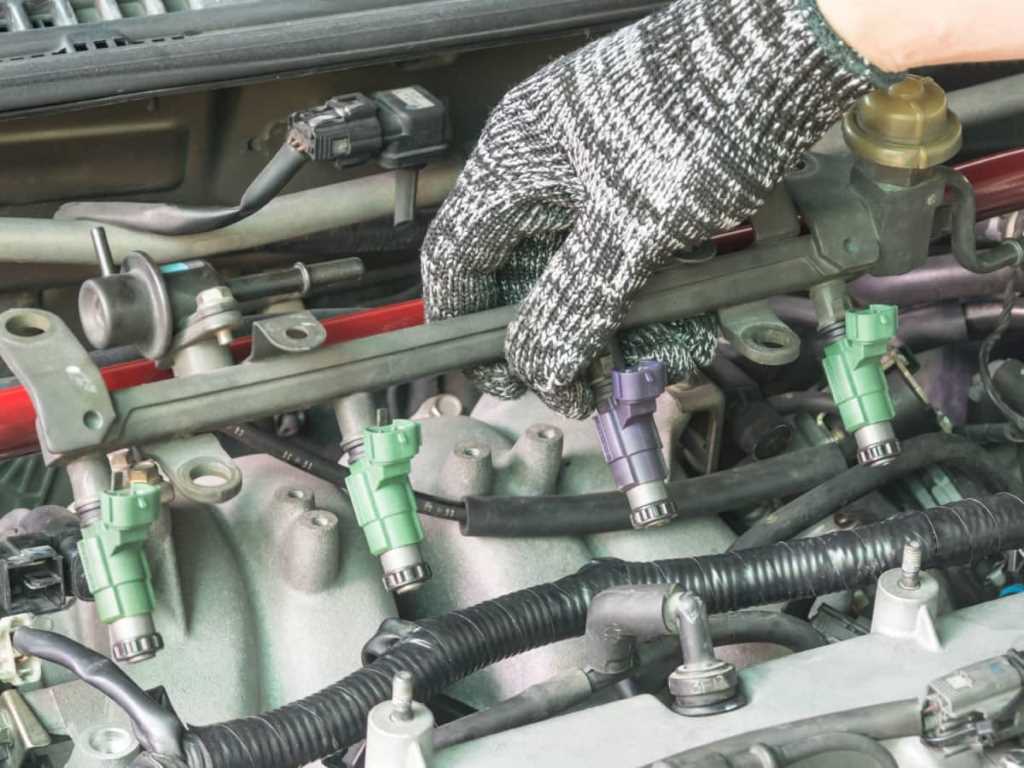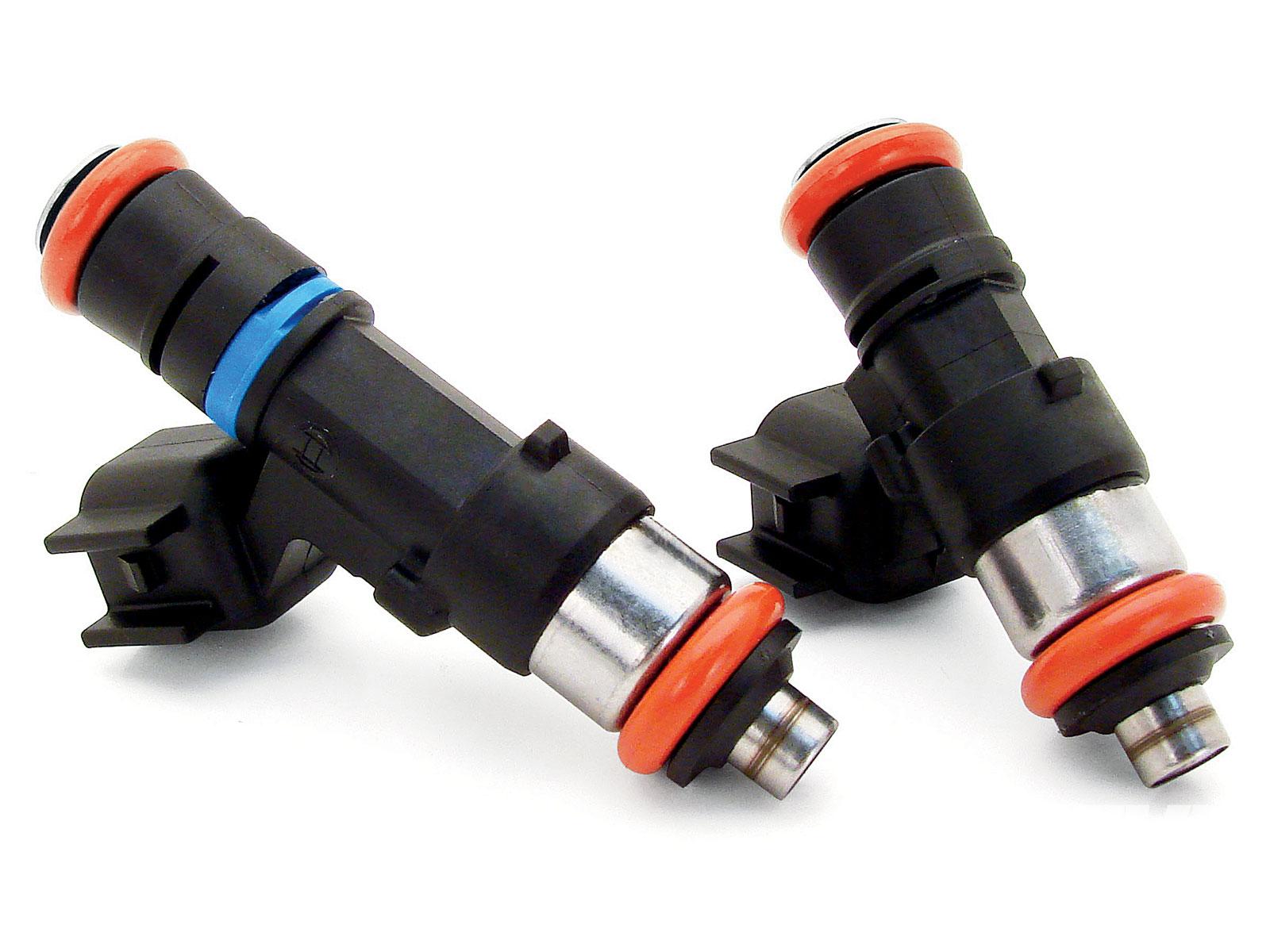Though some fuel injector issues may need an inspection of a professional mechanic, others can be diagnosed by DIY methods with some simple tools. To learn more on how to test fuel injectors at home, let’s check out the blog below!
Fuel injectors play an important role in your vehicle. They spray fuel into the cylinders of your engine where the fuel is mixed with air and compressed before being burned by the spark plug to create power.
As a consequence, if there is any issue with one of your fuel injectors, your engine will run badly or even stop running at all.
Contents
An Easy Guide On How To Test Fuel Injectors At Home
In the following pasts, we will guide you on how to test fuel injectors at home, including TBI (Throttle Body Injection) injectors and EFI (Electronic Fuel Injection) injectors.
1. Test TBI Injectors
Inspecting the fuel spray on TBI injectors is easily checked visually and it is the first method of how to test fuel injectors. You can access fuel flow spray with ease, making it fast to do fuel injector testing for potential issues.
Steps to inspect fuel spray:
- Take the cover off the air cleaner housing
- Ask someone to start the engine (or crank if it does not start)
- Inspect the spray pattern that comes out of the injector
It will be normal if you observe fuel coming out partially atomized in an inverted V pattern. On the other hand, if you see a solid, single spray or irregular pattern, it means your injector is dirty or an internal component broke or wore out.
Adding a high-quality cleaning fuel system additive to the fuel tank is an effective way to fix a dirty injector. Or you can bring your vehicle to a garage and ask them to clean the system.
However, if you don’t observe fuel coming out, there might be some causes for this:
- Fuel filter clogged
- Bad fuel pressure regulator
- Injector not receiving power
- Bad injector
- Blocked fuel injector
To fix the faulty injector, use the tests described in the below section: Testing EFI injectors.
So we just introduced to you the first method of how to check fuel injectors, now let’s move to the second method, test EFI injectors.
2. Test EFI Injectors
The Electronic Fuel Injection (EFI) system has a different structure from the Throttle body fuel injection (TBI).
The EFI system doesn’t have an accessible fuel spraying for inspection. And the structure of the EFI system is so complicated, offering little room to approach the injectors without removing the complete assembly.
Therefore, you will need to use some tool to check fuel injectors.
SEE MORE:
However, there are some fuel injector test to check whether one or more injectors are running well or whether the trouble is within the controlling circuit or the injector.
To do this test, you have to listen to each checking fuel injectors whether they are working or not.
As the car computer runs to energize or de-energize the injector, the valve inside the injector creates a clicking sound when it opens and closes.
- At the first step of how to test fuel injectors, you will need to use a mechanic’s stethoscope or maybe a piece of thin hose of the appropriate length or a long standard screwdriver to listen to the injector.
- Start the vehicle and let it idle
- Press the parking brake and open the hood
- Use the earpiece to listen to the sounds inside the injectors

- If the injector works well, you will hear a clicking sound inside. The sound is made from the solenoid inside the injector activating and deactivating the injector’s valve.
- If there is no clicking sound, either the computer is not sending the pulse signal or the solenoid has broken. It means you have a dead injector.
- Repeat the process on another injector and make a note of dead injectors, then you can test them in the below section.
By following these steps of how to test fuel injectors, you will be able to check whether it’s okay or not and will know what to do with these problems.
3. How To Check A Dead Injector
Checking the injector’s coil is one of the tests you can do to test a dead injector. To do this test, you will need the resistance value for the coil inside the injector and a multimeter.
You can find out the injector resistance value in the manual of your car. In case you can’t find the injector resistance value of your car, you can buy an aftermarket repair manual at a local auto parts store or online.
And if you don’t know how to use a multimeter, check the video below to get some basic knowledge.
Steps to check the injector coil
- Turn off the vehicle, remove the electrical connector of the injector you want to check
- Put the digital multimeter to a right value on the Ohms scale according to the resistance specs for your fuel injector (usually, you need to set the multimeter to read at least up to 30 Ohms).
- Investigate the injector electrical terminals – polarity does not matter
- A resistance reading other than the specified in your service manual means you need to replace the injector. For instance:
- If your reading is jumping all over the place, the coil is partially opened.
- If your meter reads infinite resistance, it means the coil in the injector is opened.
- On the other hand, if you read zero resistance, the coil is shorted.

Steps to check the injector controlling circuit
To check the injector controlling circuit, you can use a test light (an inexpensive but efficient tool) to check for power and pulse signals coming from the computer on each dead injector.
So let’s get started with how to test fuel injectors with test light.
- Hook the test-light clip to bare metal bracket or a bolt on the engine
- Disconnect the electrical connector from the fuel injector that you need to test
- Turn on the ignition switch
- Connect the terminals (one at a time) of the harness connector with the test light. One of the terminals should make the test light turn on, this is the injector power source which comes from the computer. If the test light does not glow, you have found the issue. Inspect the power side of the circuit for a bad connection along the circuit or a blown, short fuse.
- Now connect the fuel injector to the harness connector and plug the test light clip to the positive side of the battery
- Let an assistant to start or crank the engine
- Inspect the opposite wire on the fuel injector connector again (this is the pulse signal that comes from the computer). If you can re-check the wire, install a pin through the wire and use it to investigate the wire.
- At the time, the test light should light up, which means the injector is receiving the pulse signal from the computer to open and close the injector.
- If the test light remains lit, there is a problem in the circuit or the device driver in the computer may have failed.
- In case this is a broken injector and the power and the pulse signals are present, replace the injector.
If needed, check the maintenance tips in your vehicle’s manual for further tests.
Check out this video from ScannerDanner for a more detailed guide on how to test a fuel injector circuit with basic tools!
Sum Up
If there is no negative result after you did all the tests, it doesn’t mean your injectors are working well.
You tested for some regular issues you can troubleshoot at home, but one or more injectors may have a weak or broken return spring or a worn or dirty (less common) valve that’s causing the injector to leak or block fuel.
Some of these issues can be a challenge to investigate without using the right equipment. But an auto service shop with professional tools can help you deal with these types easily.
So remember to follow step by step of how to test fuel injectors, you will be able to identify what problem your car has. Another solution is taking your car to a mechanic, they will help you to do so.




I liked it guys l have learned something lm really impressed
those are not fuel injectors
they are spark plugs!